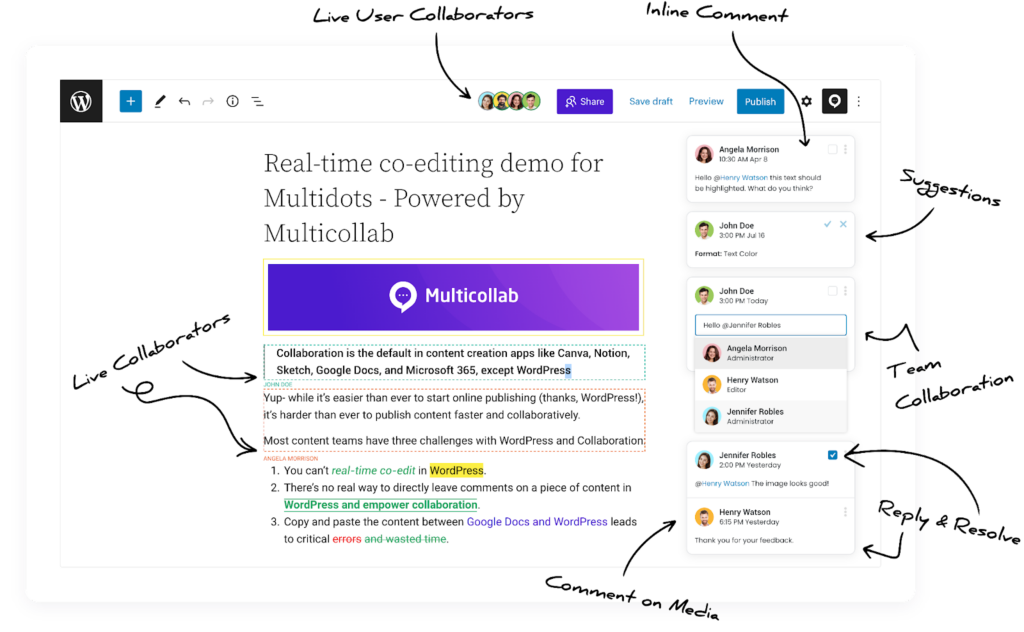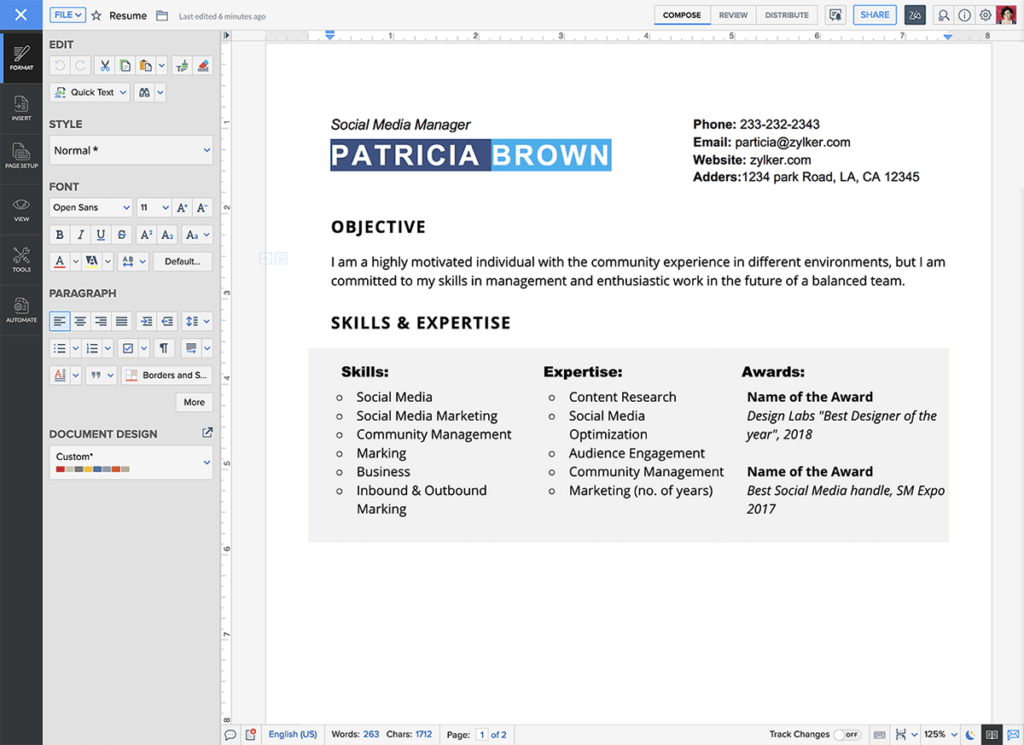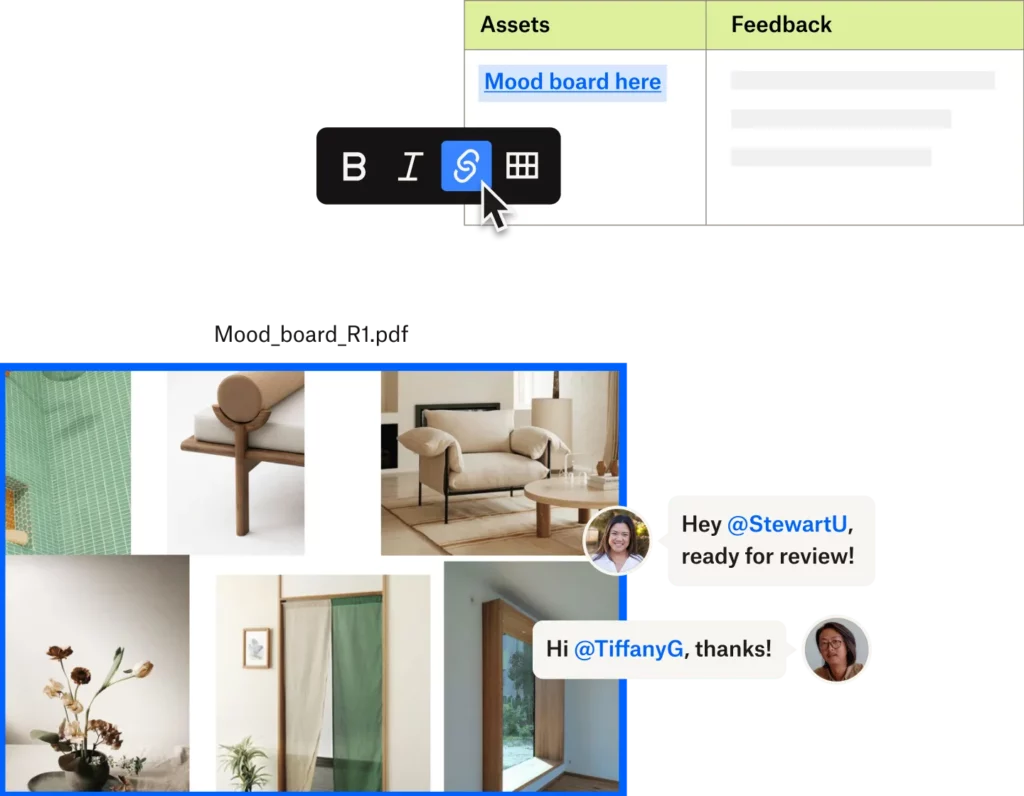Table of Contents
When it comes to modern work dynamics, the significance of collaborative editing has reached new heights, especially within the framework of remote work and online team collaboration. As the traditional boundaries of office spaces blur and teams become more dispersed, the ability to seamlessly edit and create content together has become a non-negotiable. This evolution has given rise to a diverse range of collaborative editing tools, each designed to enhance the efficiency and productivity of remote teams.
This comprehensive guide will delve into the world of collaborative editing, exploring its profound impact on how we work. From the challenges to the unparalleled benefits, we will be sharing actionable insights and introducing you to some of the most advanced tools available, empowering you to elevate your collaborative capabilities to new heights.
Benefits and Challenges of Collaborative Editing
Collaborative editing is more than a feature; it brings to the forefront both the remarkable advantages and the nuanced challenges for content creators, site owners, and businesses. Understanding and navigating these dynamics is key to leveraging the full potential of collaborative editing within the broader professional setting.
Benefits of Collaborative Editing
Collaborative editing can significantly enhance content creation, offering increased efficiency facilitated by the simultaneous input from multiple editors. A faster review cycle provides the opportunity for immediate feedback, resulting in a streamlined process that minimizes the occurrence of content errors.
Increased Efficiency through Simultaneous Input: Collaborative editing transforms the traditional linear editing process into a dynamic and simultaneous effort. Multiple editors can contribute to a document concurrently, fostering a sense of collective creativity and significantly expediting the content production timeline.
Accelerated Review Cycles and Immediate Feedback: One of the standout benefits of collaborative editing is faster review cycles. Collaborative editing tools facilitate immediate feedback, reducing the time it takes to refine content. This swift exchange ensures that content errors are caught and rectified promptly, maintaining the integrity of the final document.
Better Version Control for Seamless Collaboration: With collaborative editing, version control becomes a streamlined process. All team members, regardless of location, can access and work on the same version of a document in real-time. This not only minimizes the risk of conflicting edits but also ensures a cohesive and up-to-date document across the entire team.
Asynchronous Feedback for Global Collaboration: The beauty of collaborative editing lies in its ability to facilitate asynchronous feedback. Teams across different time zones can contribute seamlessly, allowing for continuous progress even when team members are not working simultaneously. This flexibility in collaboration time frames fosters a global and 24/7 work environment.
These benefits ensure that the final product is not only a collective effort but also a refined, error-free masterpiece that reflects the diverse contributions of every team member.
Challenges of Collaborative Editing
While collaborative editing brings a wealth of benefits, it also presents challenges that demand careful consideration to maintain a harmonious and secure workflow.
Security Concerns with Sensitive Information: Particularly when working with sensitive data, ensuring robust security measures is paramount. It’s crucial to choose collaborative editing software that offers granular access control options, allowing you to define and manage who has access to specific documents or sections, mitigating the risk of unauthorized data exposure.
Limitations on Collaborative Content Types: Collaborative editing may come with limitations on the types of content you can effectively work on. Complex documents or specialized file formats may pose challenges when multiple contributors are involved. Understanding the capabilities and limitations of your chosen collaborative editing tool is crucial to overcoming these content-related hurdles.
Content Organization Without Intuitive Tools: If your chosen collaboration software lacks an intuitive content library or central dashboard, managing multiple documents and edits can become daunting. Navigating a disorganized structure hinders efficiency and may lead to version control issues. Opting for a platform with a user-friendly organization system ensures a smoother collaborative experience.
In addressing these challenges head-on and choosing the right collaborative editing tool, teams can enhance their collaborative editing experience, overcome obstacles and unlock their true content creation potential.
Deep Dive into Collaboration Tools
Collaborative editing tools can transform how teams collaborate on content online and remotely. As we explore this, we begin with the pioneer of online collaboration—Google Docs. With its user-friendly interface and accessibility, it serves as an entry point for remote teams. Key features like in-line suggestions, real-time comments, centralized storage in Google Drive, version history, and easy content sharing make it a reliable choice for collaborative endeavors. While it has been a standard for many remote teams, it may be considered inefficient for certain users due to limitations in editing and formatting capabilities, lack of advanced access controls, and the absence of direct integration with Content Management Systems (CMS).
To get the most out of collaborative editing, opting for a more comprehensive solution than Google Docs is essential. Notable options include:
Let’s delve into some Google Docs and explore alternatives that offer enhanced collaborative editing capabilities.
Multicollab
Ideal for content creators, bloggers, and businesses publishing via WordPress, Multicollab facilitates real-time editing directly within the WordPress environment. With features like real-time collaboration, custom permissions, and advanced reporting, Multicollab transforms the WordPress environment into a dynamic collaborative workspace.

Zoho Writer
Part of the broader Zoho suite, Zoho Writer stands out with advanced document review options, robust security features, and real-time collaboration enhanced by integrated chat functionalities. This solution is not just about editing; it’s about secure and efficient collaboration. With WordPress integration, Zoho Writer ensures seamless content publishing.

Dropbox Paper
Nestled within the popular Dropbox platform, Dropbox Paper combines real-time collaboration with superior editing and formatting capabilities. Task management features like due dates, to-dos, and milestones elevate the collaborative experience beyond traditional document editing. This real-time collaboration tool provides a cohesive environment for content creation, discussion, and project management.

Exploring these alternatives to Google Docs opens the door to a more tailored and efficient collaborative editing experience, meeting the diverse needs of modern teams.
Implement Multicollab for Efficient Team Collaboration
As we navigate remote work and heightened online collaboration, the significance of effective collaborative editing becomes increasingly evident. Amidst various solutions, Multicollab emerges as the epitome of streamlined and efficient team collaboration. Multicollab’s standout features, including real-time editing within WordPress, instantaneous notifications through Slack and email, and customizable user permissions, redefine collaborative editing. This comprehensive tool is not just an option; it’s the optimal choice for content creators, bloggers, and businesses.
Don’t settle for the ordinary; elevate your collaborative editing capabilities by implementing Multicollab on your sites today. Embrace the future of team collaboration, where innovation and efficiency converge to reshape your digital endeavors.
| References | |
|---|---|
| 1 | Zoho Writer |
| 2 | Dropbox Paper |






